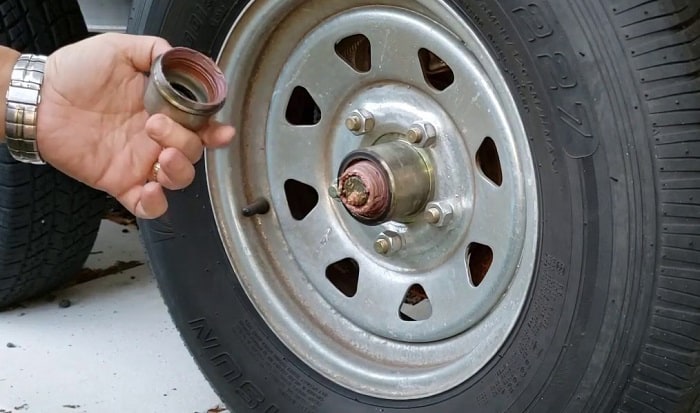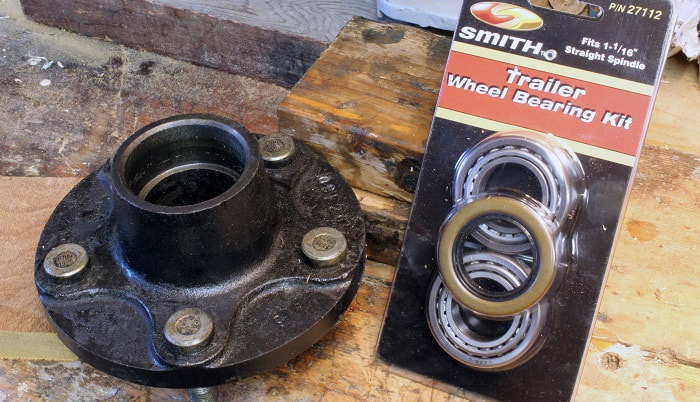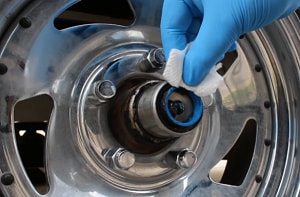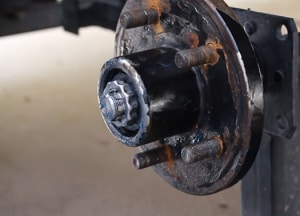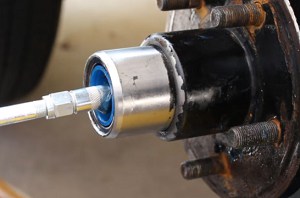Similar to a vessel or any kind of vehicle, it is extremely vital to frequently examine the boat trailer. If you fail to ensure the appropriate function of your boat trailer, it will take a toll on your craft and budget.
One of the most important tasks in the maintenance of this towing device is a boat trailer wheel bearing replacement. Since bearings are responsible for the movements and connections to other parts of the trailer, changing boat trailer bearings when necessary is very crucial.
This leads us to the topic of the post: “How to replace boat trailer bearings?” In this article, I will cover all knowledge relating to boat trailer wheel bearings as well as effective ways to change wheel bearings on a boat trailer.
Also, there will be useful recommendations from boating experts throughout the text, so make sure you stick with us until the end. Let’s begin!
Table of Contents
What to Prepare to Change Boat Trailer Bearings
When it comes to inspecting and changing boat trailer bearings, it is highly recommended to pay serious attention while preparing adequate skills and materials. Here is the list of things needed for servicing trailer bearings:
- Jack stands
- Floor jack lifter: Selecting the jack lifter that suits your trailer’s weight. Also, I suggest boaters prepare a spare lifter for easier trailer bearings replacement.
- Flathead screwdriver
- Wrenches
- Lug socket set
- Wheel chocks
- Bearing grease gun
- Air nozzle
- Plastic mallet
Ensure you purchase the correct equipment for the job when it comes to removing and replacing bearing parts. When you don’t have the appropriate products for the situation, extracting and replacing your bearings will cost a lot of time.
In addition, ingenious tools might come in handy. A long stick or thin piece of wood can be used to tap out for the seal ring. Instead of employing specific rugs for a fixed workplace, a workbench might be equally useful and affordable.
Step-by-step Tutorial to Replace Boat Trailer Bearings
Now that you’ve got all the tools and enough preparation, let’s get started. This part will provide boaters a step-by-step tutorial on replacing boat trailer bearings. Follow these instructions carefully:
Step 1: Clean the trailer and prepare the working area
First, wash the trailer’s wheel hub to remove dirt. Once the trailer is dry and clean in a secure location, dust off all available wheel hubs.
Examine your watercraft trailer for any symptoms of corrosion that might result in dangerous operation or unexpected brake grabs.
Physical defects, hair-like fissures, and heat retention may all be detected by placing your hand or feeling the surface areas of the hubs.
Study the trailer’s user handbook for directions as well as wheel bearing service charts.
Step 2: Elevating the boat trailer
The trailer shouldn’t be jacked up too much. All it requires is a little elevation from the floor.
This will make it easier to do tests, apply lubricant, repair parts, and approach the wheel’s axle end.
Using a vehicle floor stand to maintain the balance for the trailer since service can prevent inadvertent movements. This will make packing or unloading the bearings manually with the proper tension more simple.
Provide just enough space for efficient wheel rotation and inspection for lubrication or bearing replacement.
Step 3: Inspecting the trailer’s wheels
Inspect the wheels, their hub and axle, oil nipple, and other components after leveling the trailer to provide proper ground clearance.
For servicing, look for laxity, movement, and sound from the wheel, as well as other things. Examine the heat on the surface of these wheel hubs with your palm.
If they get too hot, it means there’s a problem with the bearings. This demands rapid grease service, or, in the worst-case scenario, bearing replacement.
You may now start working on the servicing operation as you’ve identified the problem. If necessary, grease or replace the wheel bearings.
Step 4: Replacing the bearings
You begin this step by unplugging the rubbery cover of the hub axle. Then, use a grease gun onto the zerk until new grease covers all the area. To avoid damage, hardening or acidification, and separation, do not add oil or soap-based fillers.
Remove the wheel to approach the hub. Take the dust lid off with a screwdriver. Based on your trailer’s condition, you might have to knock out bearing protectors with the mallet.
Remove your axle bearing with caution. Pay attention to the appearance of any metal shavings or debris.
The presence of excessive dirt or metal shavings are sufficient grounds to replace the bearing.
Finally, assemble the bearings and the wheels. Place the replacement metal ring and its rubber lid inside the wheel before reinstalling it onto the trailer. Fasten the nut again to ensure everything is secure, and back it off just a smidgeon.
To guarantee safe operation, do frequent maintenance inspections and replace your watercraft trailer bearings if it’s necessary.
For more information, please check out this video:
Other Tips on Safety Watercraft Trailer Bearing Replacement
If you want your boat trailers to have a longer lifespan, keep some of the following tips in mind:
Frequently inspection and maintenance
- Many prominent trailer models and manufacturers suggest boaters practice boat trailer maintenance once a year. It doesn’t mean that the bearings should be replaced under normal conditions because each of them is unique to its axle.
- Each spindle of the wheel axle includes its own set of wheel bearing specs. Unplug the wheel hub to determine the right bearing component needed to be replaced for the trailer’s spindle.
- Bearing maintenance is typically performed after every 2,000 to 6,000 miles, and every 6 months, depending on which comes first. Bigger trailer owners have their trailers serviced every 10,000 to 20,000 miles, sometimes once per year.
- Monitoring your bearings during and after using can help you determine when it is time to replace the bearings for sound and looseness. Inspect each side of the trailer or ask others to listen to those axles while hauling at 20 to 25 mph.
- Maintain your watercraft trailer bearings by following or plotting a maintenance schedule. It will be determined by the trailer’s size and its weight. The more regularly you apply oil, the longer your bearings will last.
Precaution recommendations
- Study the product description or user guides for your boat trailer’s bearings, wheel hub, and other items. It will assist you in keeping up with appropriate and timely maintenance or bearing replacement.
- If you hear strange sounds coming from the trailer’s wheels, that is a sign for you to replace some of their parts. Still, an adequate assessment will be helpful in terms of examining the condition of these components and avoiding the worst-case scenario: wheel separation when traveling at a high speed.
- Overgreasing the bearings might cause the ball pieces to fall off the wheel assembly. So, maintain your lubricant in the hub. Then, wipe any excess from the surface.
- With perfect timing and frequent maintenance, you may expect your bearings to endure for roughly 1000 kilometers. Evaluate the corrosion and wear quality of your wheel bearings on a constant basis before they break down.
Conclusion
It doesn’t take you much time or money to practice boat trailer-bearing maintenance. Frequently examining and replacing these parts of boat trailers will help you reduce risks while towing your vessel on the road. By following the instructions on “How to replace boat trailer bearings?” that I have delivered in the post, it is completely possible for you to finish this task efficiently.
I hope that this post was helpful to your boating experience! Did you enjoy the article? Do you want to add anything else? Please let me know and leave a comment below.

Ten years of enjoying countless trips on boats never made me love them any less! So I am here to put all those experiences into good use for other boaters who want to have a safe and fun trip with their friends and families.

